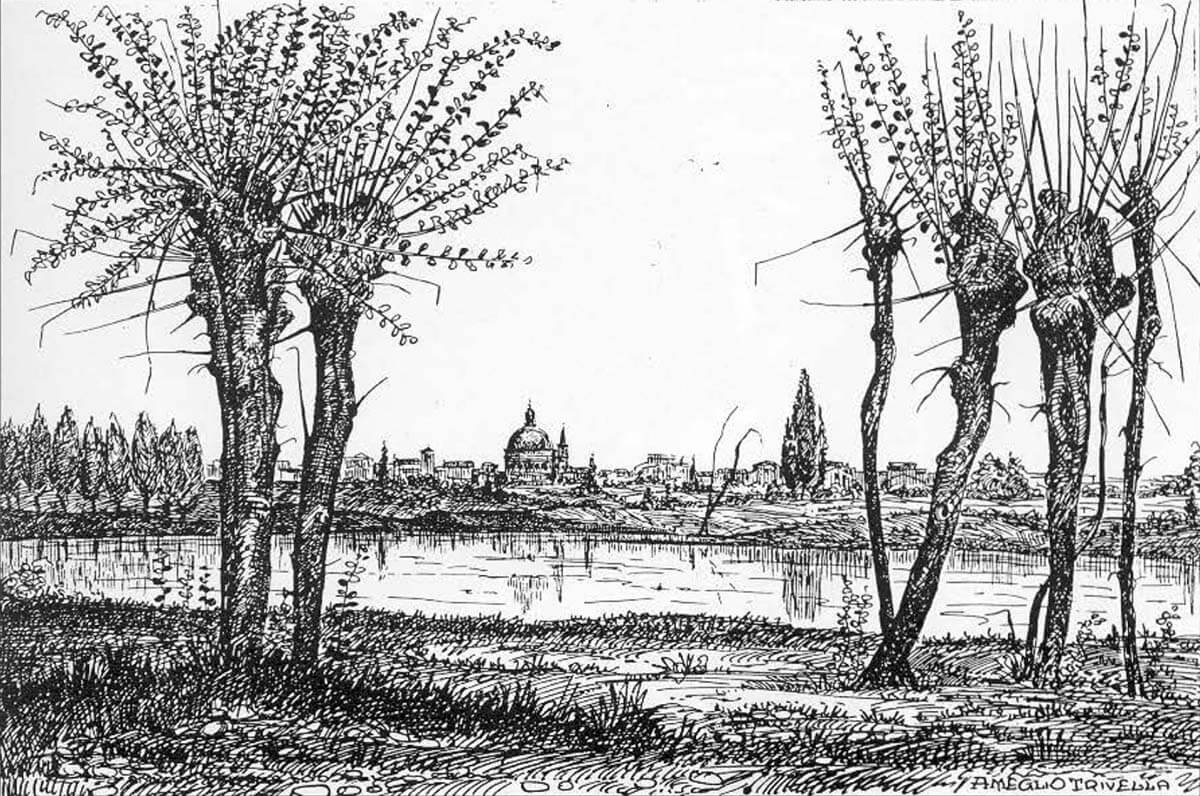A large floodplain of the Adige, the Morandina is a stream coming from the city centre along which the first residential area was laid out, made up of wooden houses to facilitate their demolition in case of enemy invasion, during the Austrian domination.
“The Morandina was reinforced by water from the “Bearara” spring and then, through the fields that it helped to irrigate with complicated systems of canals, ended up in the vast countryside of “San Michele” and then, before “Bosco Buri”, inexorably flowed into the Adige. Resurgent waters, clear, fresh, limpid as crystals in a showcase capable of preserving splendid green algae and quivering lilac blossoms in spring and, in the midst of which, the ‘marangoni’ darted inexhaustibly”.
(“Il Porto quel giorno”, Comune di Verona, Circoscrizione 7, 1984).




